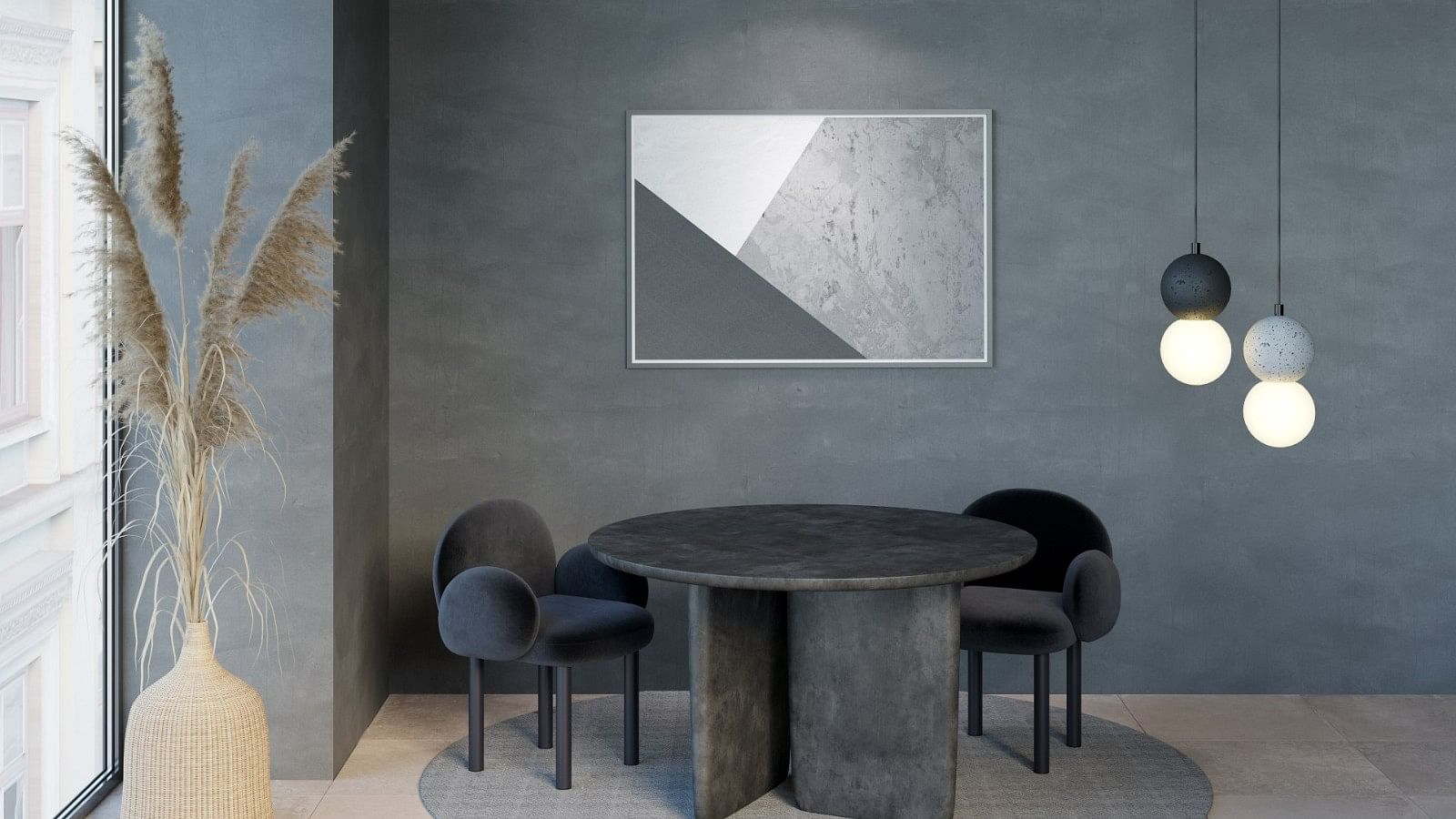
A round rug complements a round or pedestal table.
Credit: iStock
A dining table rug provides softer padding for the feet and absorbs sound in a room. While personal taste is the top factor when choosing a dining table rug, consider its size, material and patterns too. Here’s a guide to keep in mind.
Size up
There are many quirky rugs available in the market but looks won’t matter if you don’t get their proportions right. “Start by measuring the area where the rug will be placed. The size of the table, chairs, and other furniture that will be placed on it must also be considered,” says Mumbai-based interior designer Sakshi M. As a rule of thumb, select a rug that is 2 to 3 feet bigger from all sides of the table, she says.
Consider materials
Table rugs come in various materials and each of them embodies unique characteristics. Rugs are commonly available in cotton, wool, silk, jute, and synthetic materials. “In addition to being sustainable, wool and cotton rugs are durable. Their fibres resist wear and tear and continue to retain shape for decades,” says R Kaustav, an interior design consultant from Bengaluru. Furthermore, wool is naturally stain-resistant but the spills must not be left untreated for long.
Silk rugs work best for luxe and art spaces — they lend a grand feel. “These are much softer and ideal for formal settings,” says Sakshi. Jute fits perfectly in a rustic or bohemian-themed room. Rugs in synthetic materials are affordable easy to clean and suitable for homeowners who have pets or young children, Kaustav points out.
Pattern watch
Table rugs with quirky and vibrant patterns add an element of visual interest and may seem like an obvious choice. But they shouldn’t overwhelm the eye, warns Sakshi.
While geometric patterns lend a modern look, floral patterns exude a vintage feel. “Abstract designs with a dash of colour or even in monochrome tones can add a creative touch. But make sure they do not clash with other decor in the room,” she elaborates.
Colour play
Select a rug that complements a room’s colour scheme and its furniture. Neutral shades like cream, off-white, beige, grey, and taupe work with almost any decor. “To make a bold statement, choose rugs in bright red, blue, or yellow. But again, it should not be jarring,” says Kaustav.
You can either contrast the colour of a rug’s border with the colour of the surrounding furniture or match them. “Borders in tones of browns and creams often create a fluid style. They go with almost every piece of furniture,” he adds.
Shape check
The shape of the rug will depend on your dining table and the room itself. A rectangular rug is a classic choice for a dining room with a rectangular or oval table. It creates a sense of harmony and balance in design, says Kaustav.
“A round rug complements a round or pedestal table. It creates a cosier and more intimate atmosphere. A square rug is right for a square or a round table,” he adds. Irregular or abstract shapes also work with round tables.